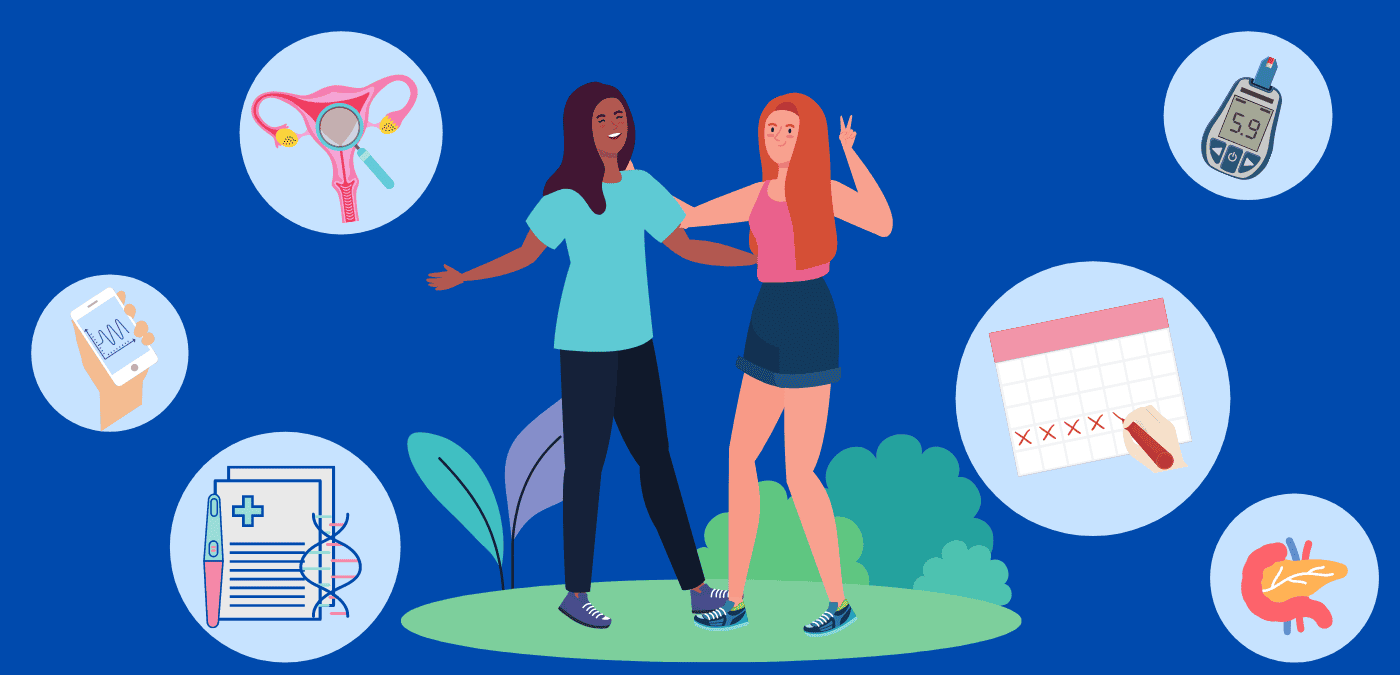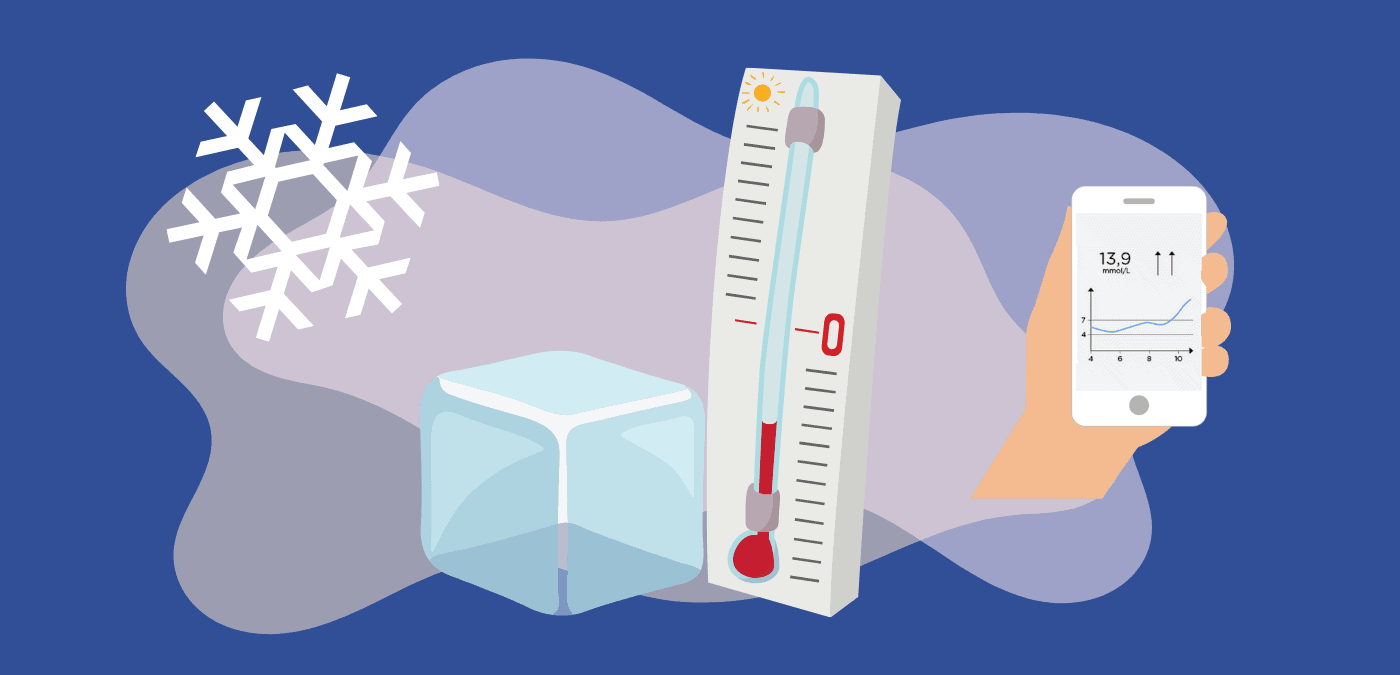Many women with type 1 diabetes will agree that they often see their blood sugar levels fluctuate depending on the phase of their menstrual cycle. This often requires them to adjust their insulin doses.
Blood sugar levels and the menstrual cycle
Typical menstrual cycles begin on the first day of menstruation and last 28 days, and are divided in three phases. Over the first few days, during the follicular phase, hormone levels are generally stable. Around the fourteenth day, hormone levels peak during the production of ova, which marks the ovulatory phase. Lastly, during the luteal phase, levels of oestrogen and progesterone are higher than before ovulation.
Studies have confirmed this fluctuation, observing that blood sugar levels will generally increase during the second half of the menstrual cycle (ovulatory and luteal phases). This is likely due to the increased insulin resistance (i.e., the same insulin dose will not lower blood sugar levels as much as usual) caused by the hormones that are produced during these phases.
Of course, every woman is different, and type 1 diabetes doesn’t impact every woman in the same way. Hyperglycemic and hypoglycemic episodes are also experienced at other times during the cycle. Women who experience several unexplained episodes should check whether they can observe any trends associated with their menstrual cycles.
Irregular reproductive system
Other than the complications they face with insulin, women with type 1 diabetes will experience additional hormonal regulation issues. For instance, studies have shown that females with type 1 diabetes are at a higher risk of reaching puberty a bit later (one to two years) and of experiencing irregular periods.
Some studies have also found that women with type 1 diabetes generally have a shorter childbearing life and, therefore, hit menopause earlier (two years) than women without type 1 diabetes. Type 1 diabetes affects many aspects of one’s life, including hormonal cycles.
While type 1 diabetes in Quebec is still largely unknown, the BETTER research project seeks to paint an accurate picture of people with type 1 diabetes in the province.




